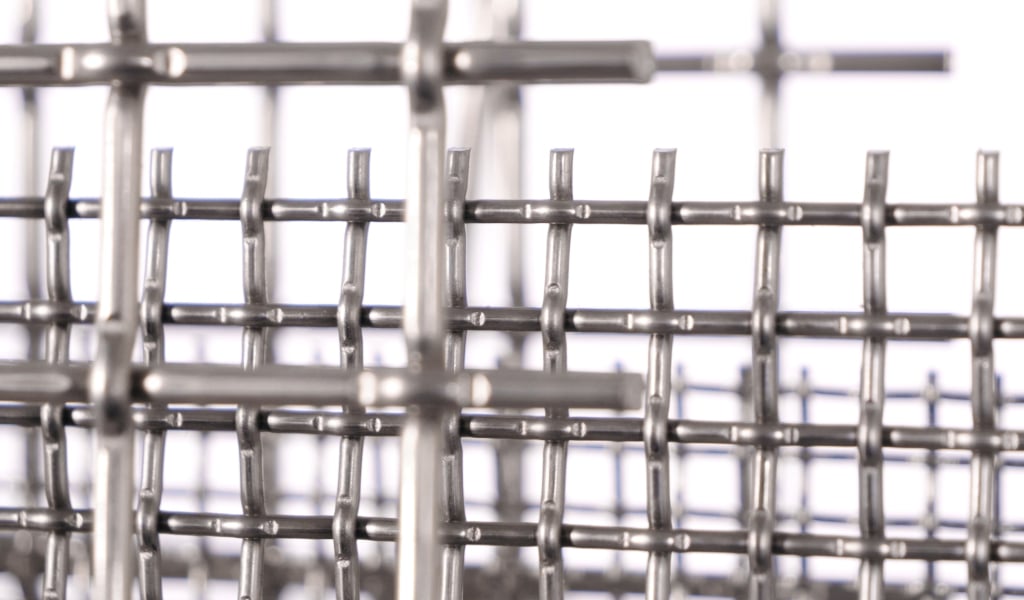Inconel 600 vs 316 Stainless Steel in Hot Gas Filtration
Hot gas filtration systems face extreme challenges: high temperatures, corrosive compounds, and frequent thermal cycling. These conditions can quickly degrade filter elements, leading to various safety risks and downtime. Material failure in these environments often stems from poor alloy selection, especially as processes push toward higher thermal loads and stricter emissions standards.
Two alloys that govern discussions for these demanding applications are 316 stainless steel and Inconel 600. Both have their own respective track records, but their performance profiles differ significantly. 316 stainless steel remains a cost-effective choice for moderate temperatures and controlled dew point conditions, while Inconel 600 is engineered for extreme heat and aggressive atmospheres by maintaining strength and oxidation resistance. Knowing these differences is critical for optimizing filter life and system reliability.
At W.S. Tyler, our mission is to deliver filtration solutions that are cleaner, safer, and built for longevity. Backed by over 150 years of woven wire mesh expertise, we help industries navigate complex material decisions with confidence, ensuring performance that meets today’s environmental and operational demands.
In this article, we’ll explore the role of high-performance alloys in hot gas filtration, highlight why Inconel excels in harsh, high-temperature environments, and review the key properties and benefits of 316SS for cost sensitive applications. By the end, you’ll have actionable insights to help choose the right alloy for your system and avoid premature failures.
The Role of High-Performance Alloys in Filtration Systems
Hot gas filtration involves not only just removing particulates, but doing so under punishing conditions where temperatures can exceed 600°C (1,110°F) and corrosive compounds attack every surface. Material selection directly impacts system reliability, emissions compliance, and lifecycle costs.
Improper alloy choice is one of the leading causes of premature filter failure, resulting in your system going down and causing expensive replacements.
High-performance alloys like stainless steels and nickel-based superalloys are engineered to maintain structural integrity under thermal cycling, pressure spikes, and corrosive gas streams. Stainless steel, particularly 316SS, offers a good balance of strength, corrosion resistance, and cost efficiency for moderate-temperature environments.
Nickel alloys such as Inconel 600, on the other hand, deliver superior oxidation resistance and creep strength at temperatures approaching 800°C (1,470°F), making them indispensable for advanced filtration systems in cement, metallurgical, and waste-to-energy applications.

Current trends show a shift toward alloys that combine durability with sustainability. Manufacturers are prioritizing materials that reduce maintenance cycles and support environmental compliance. Nickel-based alloys are gaining traction in high-temperature filtration because they withstand aggressive conditions without frequent replacements, while stainless steel remains dominant in cost sensitive applications where dew point corrosion is controlled.
While high-performance alloys extend service life, they come at different price points. Best practices recommend selecting the lowest-cost material that meets design criteria, reserving premium alloys for critical systems where failure would be catastrophic. This approach ensures operational efficiency without overengineering, aligning with modern value engineering strategies.
Advantages of Inconel 600 in Harsh Filtration Environments
Inconel 600 is a nickel-chromium alloy designed to thrive in environments where stainless steels begin to fail. Its ability to maintain mechanical strength and oxidation resistance at temperatures from 700-800°C (1,290-1,470°F) makes it ideal for hot gas filtration systems operating under severe thermal loads.
Unlike 316SS, which typically caps out at lower temperatures, Inconel 600 provides a significant thermal margin, reducing the risk of creep deformation and scaling during prolonged high-temperature service.
Beyond heat tolerance, Inconel 600 offers exceptional resistance to oxidation, carburization, and chloride-induced stress corrosion cracking. Its high nickel content of about 72% stabilizes the alloy against aggressive halides and mixed gas environments, while chromium forms a protective oxide layer that shields against sulfur and acidic compounds. This makes it particularly valuable in chemical processing, metallurgical off-gas cleaning, and pre-SCR filtration stages where corrosive agents are unavoidable.
Having difficulty with managing temperature in your hot gas filtration system? Learn about the problems extreme temperatures can cause and the solutions to fix them in our article below:
Hot gas filtration systems often experience frequent startups, shutdowns, and back-pulse cleaning cycles. Inconel 600 excels under these conditions thanks to its resistance to thermal shock and fatigue. Its microstructure remains stable during rapid temperature changes, preventing cracking and distortion that can compromise filter integrity. This durability translates into longer service life and fewer maintenance interventions.
Current industry trends show Inconel 600 being deployed in cement kilns, waste-to-energy plants, nuclear reactors, and aerospace exhaust systems, where reliability under extreme conditions is non-negotiable. Its adaptability to both oxidizing and reducing atmospheres ensures consistent performance even as process conditions fluctuate.
While Inconel 600 comes at a premium cost, its ability to withstand high heat, corrosive gases, and mechanical stress makes it indispensable for critical filtration applications. For operations where failure would result in catastrophic downtime or environmental non-compliance, this alloy delivers unmatched peace of mind.
Key Properties and Benefits of 316 Stainless Steel
316 stainless steel continues to dominate industrial filtration applications because it offers an excellent balance of cost, corrosion resistance, and mechanical strength. Its composition of 16-18% chromium, 10-14% nickel, and 2-3% molybdenum creates a passive oxide layer that resists chloride attack and acidic environments, making it ideal for hot gas filtration in cement, biomass, and chemical processing.
This alloy is widely used in woven wire mesh because it can be fabricated into precise, durable filter elements without sacrificing structural integrity.
316SS performs reliably at elevated temperatures, with continuous service recommended up to 600°C (1,110°F) and intermittent exposure tolerating even slightly higher temperatures in oxidizing environments. Even at these extreme temperatures, it's known to retain more than 60% of its room temperature tensile strength, ensuring stability under thermal stress. Its ductility and resilience allow it to withstand frequent back-pulse cleaning and thermal cycling without cracking, which is critical for maintaining filtration efficiency over time.
The addition of molybdenum significantly improves resistance to pitting and crevice corrosion, especially in chloride-rich or mildly acidic environments. This makes 316 stainless steel suitable for applications where acid dew point corrosion is controlled. However, it is vulnerable to aggressive acids like sulfuric and hydrochloric acid when condensation occurs below the dew point, which can lead to localized attack and premature failure.
For environments with controlled chemistry, 316SS delivers long service life at a fraction of the cost of high-nickel alloys.
316 stainless steel is readily available in a wide range of wire diameters, mesh counts, and laminate configurations, making it ideal for value engineered filter elements. Its ease of fabrication elements includes welding, forming, sintering, and it supports custom designs for diverse industrial needs. This versatility, combined with global availability, positions 316SS as the most practical choice for large-scale installations where budget and performance must align.
316 stainless steel is best suited for moderate-temperature, mildly corrosive environments where mechanical robustness and cost efficiency are priorities. While it cannot match the extreme heat tolerance of Inconel 600, its proven reliability and affordability make it the preferred option for many industrial hot gas filtration systems.
Making the Right Choice for Your Filtration Needs
Selecting the right alloy for hot gas filtration is critical to system performance and longevity. We’ve explored how Inconel 600 excels in extreme heat and corrosive environments, while 316 stainless steel offers a cost-effective solution for moderate temperatures and controlled dew point conditions.
Before making a decision, evaluate your operating conditions like temperature range, gas chemistry, and maintenance cycles. If your process involves frequent thermal cycling or sustained temperatures above 600°C, Inconel provides the durability you need. For applications where conditions are stable and cost efficiency is a priority, 316 stainless steel remains a proven choice.
At W.S. Tyler, we are committed to helping you achieve cleaner, safer, and more reliable filtration systems. Our expertise in woven wire mesh ensures that every solution is engineered for performance and tailored to your unique requirements.
Looking to learn how 316 stainless steel stacks up to other commonly used alloys? Check out our article below to learn more:
About Dylan Polz
Dylan is a Content Writer with 2 years of experience in marketing and SEO. Passionate about learning and strengthening his writing skills, he is currently expanding his expertise in particle analysis and woven wire mesh technologies. With a strong belief in the power of information to drive positive change, his goal is to develop content that supports cleaner, safer solutions across all industries.



